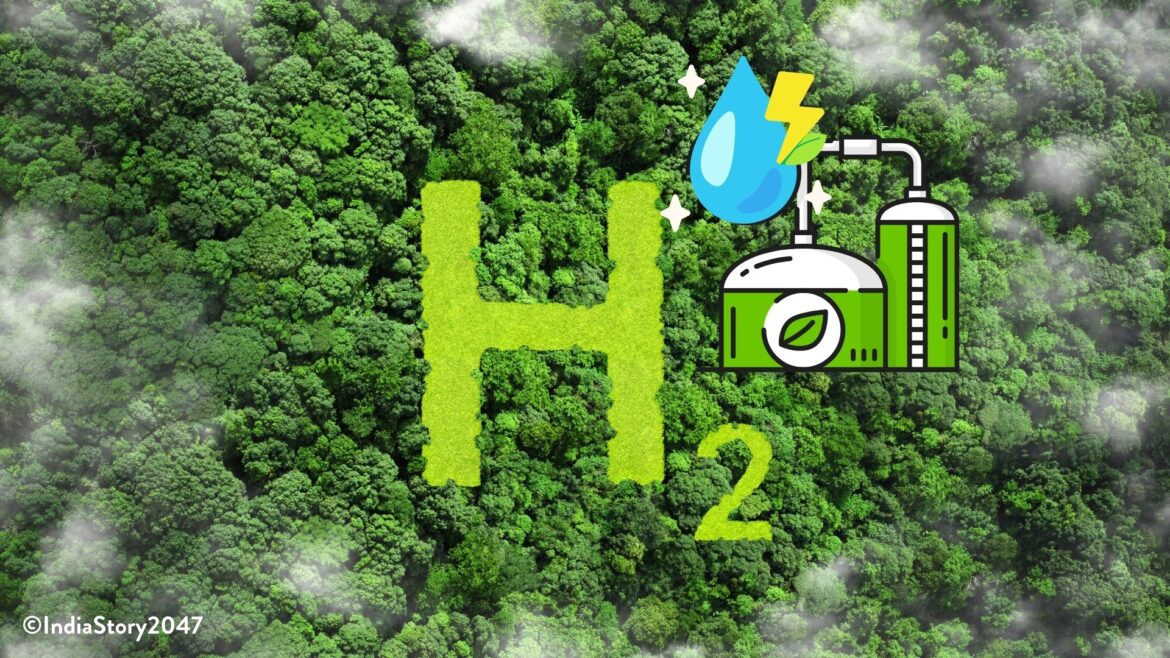The Unspoken Link Between Air Pollution and Heart Disease in India
Air pollution isn’t just about smog and coughs — it’s quietly choking our hearts too. Here’s a raw, human take on the hidden connection between dirty air and heart disease in India.

Humanity is at a critical juncture in the fight to preserve our one and only planet Earth. Green Hydrogen holds the potential to contribute as an eco-friendly and sustainable energy option.
Rising global temperatures and the visible effects of climate change have made it clear that urgent action is required. While some people still view climate change as a myth and something that is not to be bothered about, the evidence is undeniable. The challenge now lies in developing sustainable energy solutions to mitigate the harmful effects of fossil fuels and significantly reduce carbon emissions.
Hydrogen has long been an energy resource utilised across various industries. However, it is not freely available in nature and must be produced through various scientific methods. The majority of hydrogen today is derived from fossil fuels, which contributes significantly to global carbon emissions.
1. Brown Hydrogen: It is produced from coal via a process called gasification. This process is highly carbon-intensive.
2. Grey Hydrogen: It accounts for approximately 75% of global hydrogen production. It is derived from natural gas using a process called steam methane reforming, which releases substantial CO2 emissions.
3. Blue Hydrogen: It is also derived from fossil fuels but incorporates carbon capture and storage technologies to reduce CO2 emissions.
4. Green Hydrogen: It is produced through electrolysis using renewable energy sources like wind or solar. This method splits water (H2O) into hydrogen and oxygen without emitting harmful byproducts, making it a clean and sustainable alternative.
Green hydrogen has become a game-changer for the world in its quest of transition to sustainable energy options. Unlike traditional methods, its green hydrogen’s production relies on renewable energy, resulting in zero greenhouse gas emissions. This makes it a important solution to decarbonize industries where emissions reduction has been historically challenging, such as transportation, chemicals, iron and steel production, and residential heating.
Globally, hydrogen production contributes approximately 843 metric tonnes of CO2 annually, underscoring the urgent need to shift towards eco-friendly and sustainable options like green hydrogen. By 2050, global carbon emissions must be significantly reduced, and green hydrogen offers a viable pathway to achieve this.
India is at the forefront of the green hydrogen revolution, with the government actively promoting its adoption through the National Hydrogen Mission. Launched in August 2021, the mission aims to position India as a global hub for green hydrogen production and export. It aligns with India’s commitment to achieving net-zero emissions by 2070.
1. Green Hydrogen/Green Ammonia Policy: This policy facilitates green hydrogen production by providing incentives such as open access, waiver of transmission charges, and priority connectivity.
2. Production Targets: By 2030, India aims to produce 5 million metric tonnes (MMT) of green hydrogen annually.
3. Infrastructure Development: The government is actively promoting establishment of Green Hydrogen Mobility Stations to support hydrogen-powered vehicles.
4. Financial Commitment: A ₹19,744 crore outlay under the National Green Hydrogen Mission has been given to boost production, utilization, and export.
Several pilot projects have been launched to test and expand green hydrogen’s viability in transportation and other sectors:
Leh, Ladakh: NTPC is setting up India’s first green hydrogen fueling station, producing 80 kg of hydrogen daily powered by solar energy.
Chamba, Himachal Pradesh: The state’s first green hydrogen mobility station aims to promote clean transportation.
Jorhat, Assam: Oil India Limited has established a pilot plant producing green hydrogen using renewable energy.
Gujarat Hydrogen Valley: A comprehensive initiative to develop hydrogen refueling infrastructure across the state.
Despite its immense potential, several challenges hinder green hydrogen’s widespread adoption:
1. High Production Costs: Producing green hydrogen remains expensive compared to traditional methods.
2. Infrastructure Deficits: The limited network of hydrogen refueling stations restricts its feasibility for large-scale adoption.
3. Technology Maturity: Hydrogen fuel cell technology requires further R&D to enhance efficiency and reduce costs. This also leads to increased costs for further implementation example Hydrogen fuel cell powered cars are still very expensive.
4. Safety Concerns: The flammability of hydrogen necessitates stringent safety protocols for handling and storage.
The prospects for green hydrogen in India are promising, driven by:
1. Government Support: Strong policy backing and financial incentives.
2. Private Investments: Companies like Reliance Industries, Adani Group, and Indian Oil Corporation are investing heavily in green hydrogen production and infrastructure.
3. International Collaborations: Partnerships with countries like Germany and Japan for technology and financial support.

Air pollution isn’t just about smog and coughs — it’s quietly choking our hearts too. Here’s a raw, human take on the hidden connection between dirty air and heart disease in India.

Development activities in Ladakh must be done keeping in mind the ecological threat and impact in the region

In the bustling landscape of modern India, there are women artisans working towards making a change. A change to their own lives and to the environment - one thread at a time.

विकसित भारत 2047 का सपना तभी पूरा होगा जब भारत वायु, जल और भूमि प्रदूषण जैसी गंभीर समस्याओं से निपटेगा। जानिए प्रदूषण भारत की प्रगति में कैसे बना है सबसे बड़ी रुकावट।

